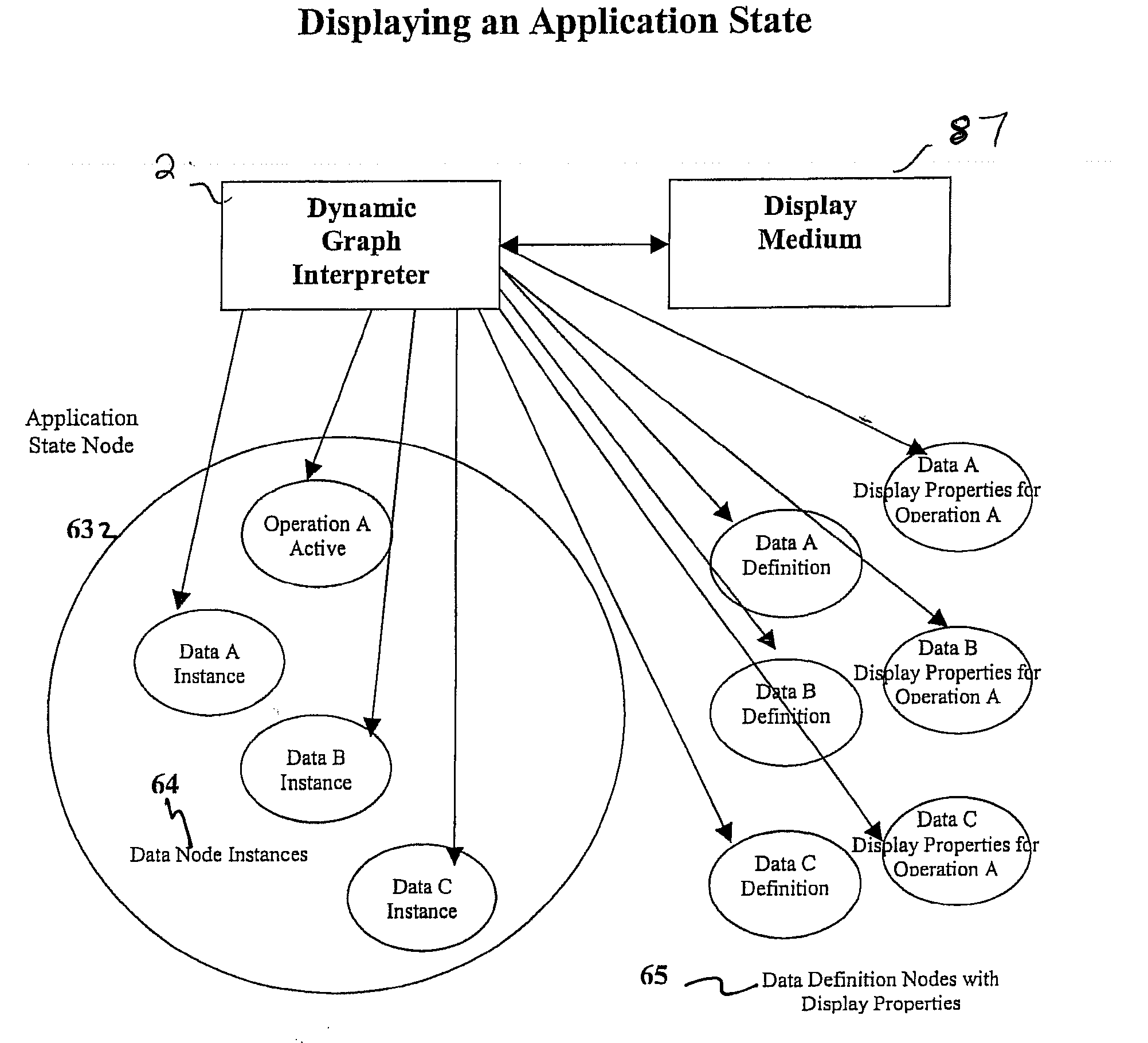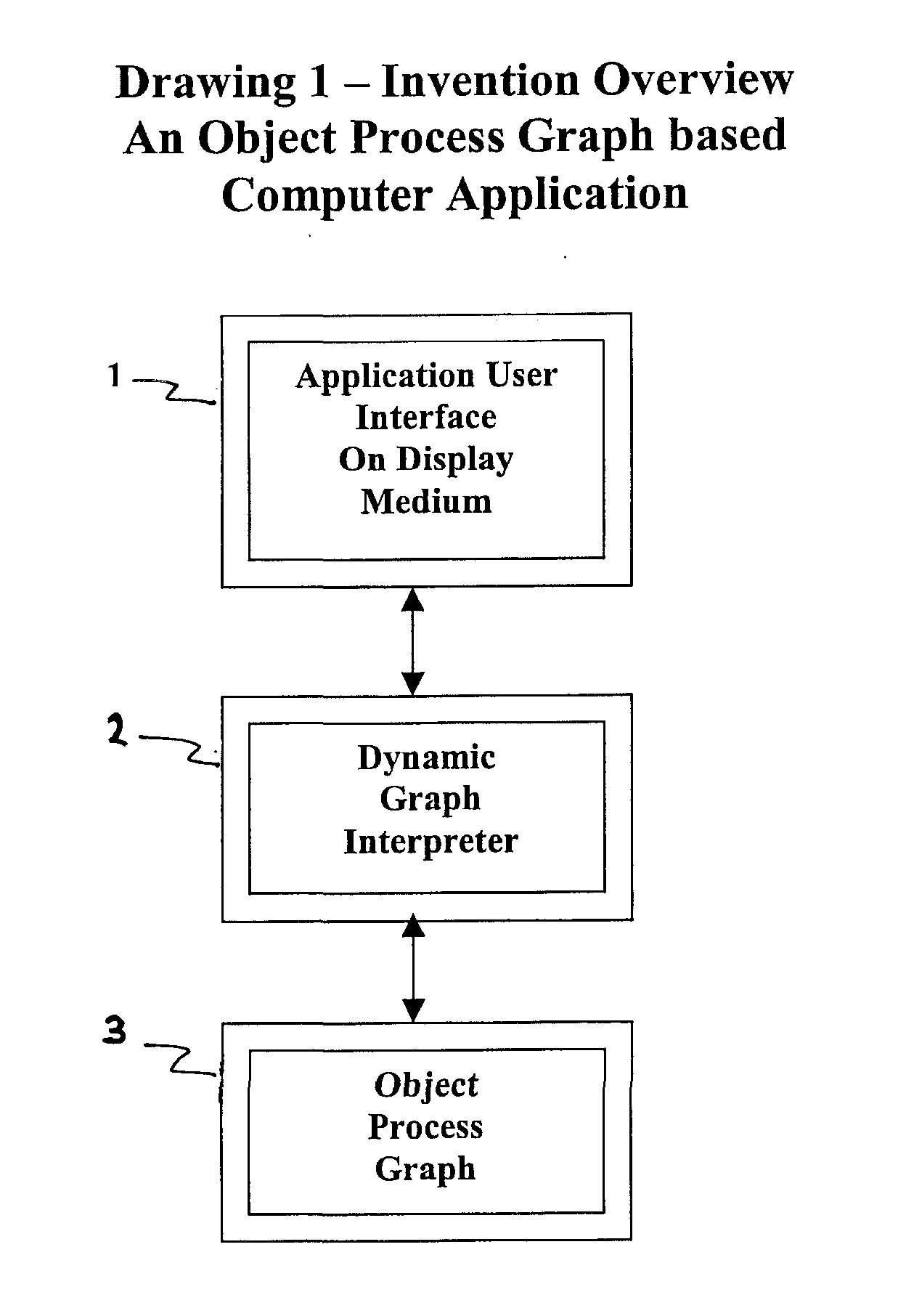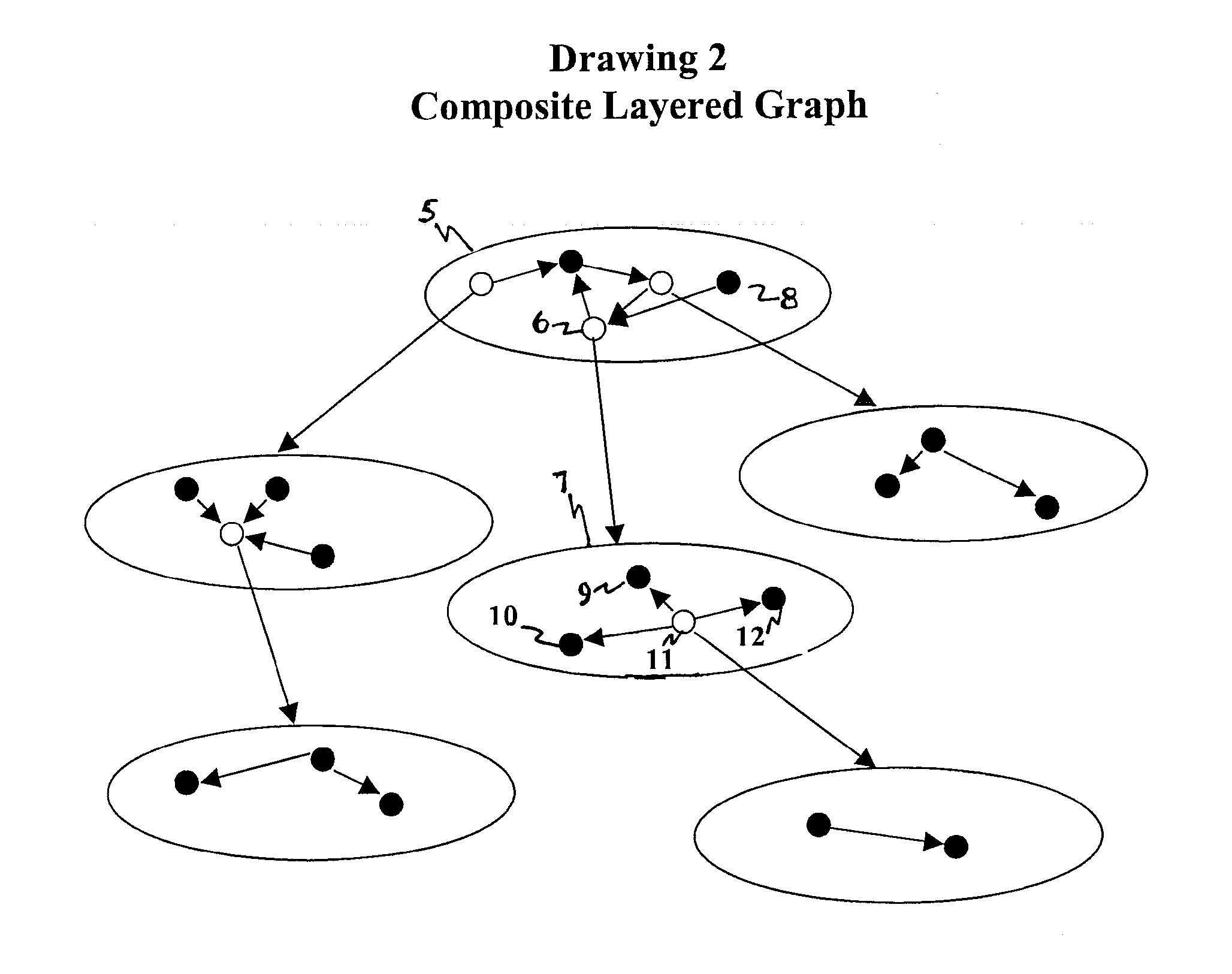Object process graph system
a process graph and object technology, applied in the field of software development tools, can solve the problems of high-risk, high-cost, and high-risk venture of large-scale system development, and achieve the effects of broadening the scope, flexibility and usefulness of software application systems, and reducing costs and risks
- Summary
- Abstract
- Description
- Claims
- Application Information
AI Technical Summary
Benefits of technology
Problems solved by technology
Method used
Image
Examples
Embodiment Construction
[0030] Aspects of the present invention include an Object Process Graph (OPG) and a Dynamic Graph Interpreter (DGI). An OPG defines a computer application's persistent and transient data, its processing logic and data flow, and the display and validation characteristics of every application data item. A graphical user interface based editing system can be used to create and modify OPG's. The DGI is an object-oriented system that accesses, interprets, modifies and acts on an application's dynamic OPG. Interpreting an OPG is similar to running an application in a traditional computer environment.
[0031] Embodiments of the OPG may be considered a computer language (it is Turing complete) that is interpreted as the program is executed. An OPG is stored in transient and persistent computer memory. An OPG can hold any data structure, which includes, but is not limited to: relational tables, hierarchical tables, n-dimensional data arrays, spreadsheets, graphical models and 3-D physical mod...
PUM
 Login to View More
Login to View More Abstract
Description
Claims
Application Information
 Login to View More
Login to View More - R&D
- Intellectual Property
- Life Sciences
- Materials
- Tech Scout
- Unparalleled Data Quality
- Higher Quality Content
- 60% Fewer Hallucinations
Browse by: Latest US Patents, China's latest patents, Technical Efficacy Thesaurus, Application Domain, Technology Topic, Popular Technical Reports.
© 2025 PatSnap. All rights reserved.Legal|Privacy policy|Modern Slavery Act Transparency Statement|Sitemap|About US| Contact US: help@patsnap.com



